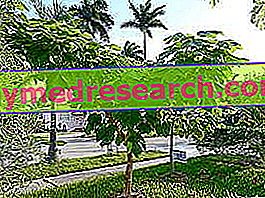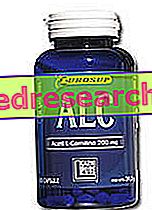INTRODUCTION

Blood pressure is NOT uniform throughout the cardio-circulatory system and is divided into:
- Systemic arterial pressure: according to the cardiac cycle, it oscillates between the two values of maximum (systolic) and minimum (diastolic); excess of systemic blood pressure is called hypertension
- Distal vasal pressure: it is smaller than the arterial one because it represents the inversion of the circle between arterial and venous; the greatest loss is at the level of the arterioles, then decreases further in the venules and stabilizes in the veins
- Central venous pressure: measurable at the jugular level, is the result of the balance between the cardiac cycle and the respiratory cycle
- Portal pressure: it is measured with catheterization and serves to determine the presence of any abnormalities (hypertension) of the portal circulation that can cause rupture and bleeding of esophageal varices (typical complications of cirrhosis with liver failure)
- Pulmonary pressure: it is proportionally lower than that of the systemic circle but has the same flow system.
Hypertension
Essential arterial hypertension is a disease of multiple etiology; it affects those who are genetically predisposed but also those who have some risk factors, such as obesity, other metabolic diseases (such as diabetes and dyslipidemia), sedentariness, chronic nervousness and so on.
"Hypertension" is defined as an impairment of the arterial pressure balance that results in the CONSTANT raising of diastolic (minimum)> 90mmHg, or of systolic (maximum)> 140mmHg, compared to a range of NORMALITY that is below 85mmHg for diastolic and below 135mmHg for systolic.
There is a form of secondary hypertension, which hardly affects 5-10% of cases, determined by the complication of other diseases, eg: parenchymal nephropathy, hyperthyroidism and coarctation of the aorta. Furthermore, some drugs can negatively affect the balance of blood pressure, such as NSAIDs, cortisone and cyclosporine.
NB . Hypertension associated with Diabetes Mellitus EXPONENTLY increases the risk of cardiovascular complications, and therefore of negative prognosis.
Causes of hypertension
The causes of hypertension are not well defined and it would be more correct to speak of "predisposing factors"; among these we recognize: increased tone of the sympathetic nervous system, decreased ability of the kidney to eliminate sodium, genetic factors, food (diet rich in sodium and poor in potassium), conditions of social stress, sedentary lifestyle and aging.
Treat hypertension
To treat hypertension, or even improve blood pressure, you need to make a series of lifestyle changes:
- In the case of overweight or obesity, restore normal weight (especially if the adipose deposit is of the android and visceral type)
- Start a diet against hypertension and its complications that includes: ZEROING of the added sodium, increase in food potassium (fruit and vegetables), drastic reduction of saturated fats and cholesterol, increase in essential fatty acids, drastic reduction in alcohol ( if in abuse) and simple sugars (with consequent decrease in glycemic peaks)
- Begin physical activity and improve cardio-circulatory fitness
- Eliminate, if present, the habit of smoking.
The medications for the treatment of hypertension, appropriately chosen and dosed by the doctor, are: diuretics, sympatholytic / adrenergic inhibitors, calcium antagonists, inhibitors of the renin-angiotensin system, direct-acting vasodilators and drugs for hypertensive emergency.
Useful supplements against hypertension
Some supplements can facilitate the reduction of blood pressure by reducing the risk of hypertension, especially if associated with diet and sports; these products are not recommended for those who have normal pressure values (below 85mmHg for diastolic and below 135mmHg for systolic) or for those who follow a pharmacological cure sufficient to compensate for any hypertensive form. On the other hand, in the latter category of subjects, after medical supervision and advice, it is possible to revise the pharmacological approach (especially following the improvement in weight and overall cardiovascular risk), leaving more room for some supplements useful for lowering the pressure.
Categories of supplements to lower blood pressure
The main categories of supplements to lower the pressure are:
Plants and plant extracts
- Diuretics: diuretics are pressure-lowering supplements that contain molecules (or extracts) useful in promoting renal filtration. However, it should be pointed out that some boast notable concentrations of molecules which, despite being diuretic, also have a stimulating and hypertensive effect; this is why these products do NOT facilitate the lowering of blood pressure (eg caffeine and theina).

Some diuretic molecules, in addition to composing the classic food supplements, can be combined and infused to obtain draining herbal teas.
NB . It is also important to specify that supplements to lower the pressure based on molecules or draining extracts are NOT diuretic drugs ! The latter, in addition to being much more effective, are equally dangerous in the event of abuse or incorrect dosage.
- Hypotensive medicinal plant extracts: There are plants, fruits, seeds and flowers capable of lowering (relatively effectively) arterial pressure regardless of renal filtration; these products are generically defined as "supplements based on hypotensive medicinal plants". Among the most effective varieties we remember: garlic, onion, rauwolfia, birch, hawthorn, cardiac, ginkgo biloba, blueberry, orthosiphon, mistletoe, red vine, olive, periwinkle, uncaria, lily of the valley, ligustico, carcadè (hibiscus), Iranian hibiscus, evodia and Iranian yarrow . These plants contain active ingredients useful for lowering the pressure that can also be used in combination within the same food supplement.
Supplements based on essential molecules such as mineral salts, fatty acids (AGE) and amino acids
- Potassium : potassium is the main intracellular cation and, as such, participates in the acid base balance and in the osmotic pressure control; however, even the remaining extracellular concentration seems to perform very important functions, including the regulation of arterial pressure. Some studies suggest that increased potassium reduces arterial pressure and increases urinary sodium excretion, with a reflex effect of reducing systolic pressure and (theoretically) of hypertension-related deaths (Rose, 1986). The average recommended intake ranges from 800 to 3100 mg / day, but using supplements to lower the potassium-based pressure that bring up to 2500-4000mg / day can be effective in reducing blood pressure up to 4mmHg.
- Magnesium : magnesium is a mainly intracellular mineral, but the small portion present in the extracellular fluid is responsible for the membrane potential of nerves and muscles; even if the mechanism, such as potassium, is still not very clear, magnesium also promotes the lowering of blood pressure. Some recent studies show that doses of between 120 and 973 mg of magnesium per day (where the requirement is around 150-500 mg / day) effectively contribute to reducing pressure levels; ultimately, taking supplements to lower magnesium-based pressure can be a useful factor but only in dosages that can exceed 200% of the recommended ration.
- Essential Fatty Acid (AGE) omega3 (ω3) : ω3 is an essential polyunsaturated fat (PUFA) that must be present in the diet in quantities equal to or greater than 0.5% of the total kcal and (possibly) have a relationship with the another AGE (ω6) of about 1: 4. Ω3 has numerous beneficial functions for the organism; to mention just a few, we mention: the constitution of membranes, the precursion of anti-inflammatory molecules, the improvement of the blood lipid balance and the reduction of arterial pressure as well as of cardiovascular risk.
In case of use of supplements to lower the pressure based on ω3 we highlight that for the moment NO side effects are known related to the abuse of fatty acids ω3, therefore (even if it is NEVER appropriate to exceed) it is advisable to use high dosages that they touch 100% of the daily requirement, therefore pearls, drops or capsules for at least 1g / day.
NB . The most "pure" and qualitatively best omega3 (rich in EPA and DHA) is krill oil, followed by oily fish oil and cod liver oil (both liquid and pearls). WARNING! The ω3 based pressure supplements are highly perishable and should be kept in the refrigerator.
- Arginine : Arginine is a semi-essential amino acid to which many functions are attributed; among the various, recently discovered but of great interest, we mention the precursion of nitric oxide (NOS); the latter is essential for the maintenance of vascular endothelial function and determines the reduction of arterial pressure thanks to the improvement of the vasal capacity to expand and force itself in an elastic manner. When supplementing with arginine-based products to lower pressure, it is advisable to use tablets for a total of about 8g / day.



